There are 3 main types of surface used on New Zealand’s roads and highways:
A motorcycle balances on 2 wheels. To stay upright, the 2 wheels must have a good grip on the road surface. So any surface that affects the tyre’s grip will affect its balance. You should also be alert for changes in the road surface.
Asphalt, also called bitumen, has a smooth, black appearance and produces a low level of road noise when you ride over it. It’s often used on busy roads and curves because it stands up well to wear caused by braking vehicles.
Asphalt can be slippery when it is wet. This means you should slow down and take extra care in wet weather.
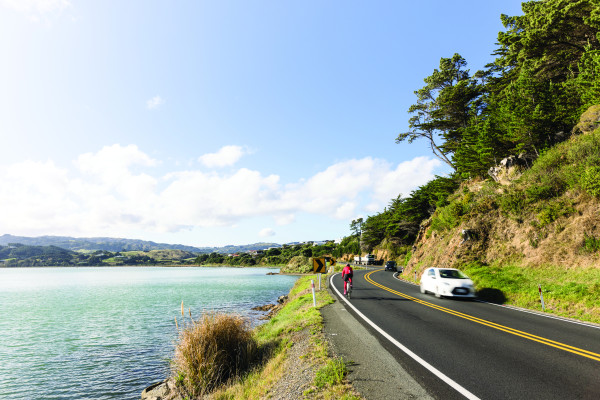
Chip-seal is a thin layer of stones set in tar. It has a rough appearance when in good condition, but may wear smooth with age and frequent use. Worn chip-seal has reduced skid resistance, so be alert for smooth patches as you ride over it.
Slow down on newly laid chip-seal. There may be patches of loose chips, which can increase your risk of skidding. Loose chips can also be thrown up when vehicles drive over them.
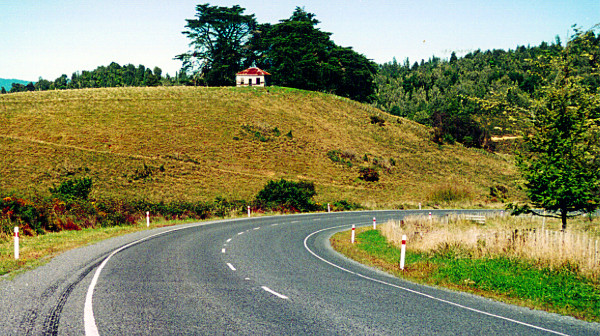
Unsealed roads can be clay, pumice or gravel – sometimes called loose metal.
Because the surface of the road is loose, your motorcycle will handle differently than when on a sealed road.
You'll also need to take extra care in dry weather, as your visibility may be reduced by dust thrown up by any vehicles in front of you. Always increase your following distance to stay back from the dust cloud.
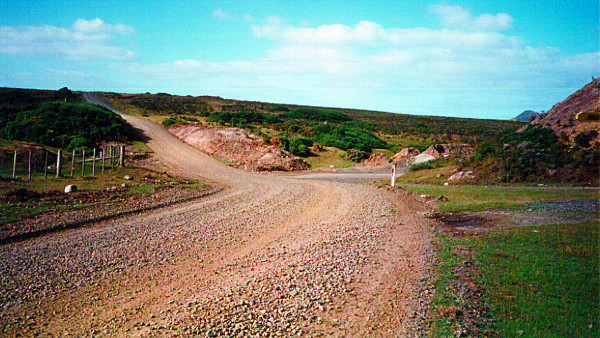
Riding on slippery surfaces can be dangerous because:
Surfaces that can be very slippery to ride on include:
To avoid skidding on a slippery road surface:
Any sudden change in speed or direction on a slippery surface can cause you to skid or fall. You should turn, brake, accelerate and change gears as little and as gradually as possible.
On a very slippery spot, such as a patch of ice, you should make no changes at all until you are across it.
Try to find the best surface that you can and use it.
It's almost impossible to keep your balance on ice, hard-packed snow or wet wooden surfaces. Avoid these surfaces if you can.
If you can’t avoid them, ride as slowly as possible and use your feet to keep from falling.
ImportantOn slippery surfaces:
|
Watch for uneven surfaces such as bumps, broken road surfaces or railway tracks across the road. They could affect your control of the motorcycle.
When you ride on an uneven surface, you should:
In general, it's safest to cross railway lines at right angles. However, if you have to turn to cross tracks at right angles, it can be more dangerous than crossing at a slight angle.
When crossing railway tracks and raised road seams, there are 2 important things to remember:
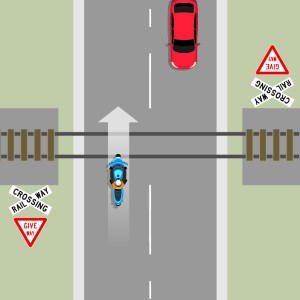
Cross railway lines at the safest angle
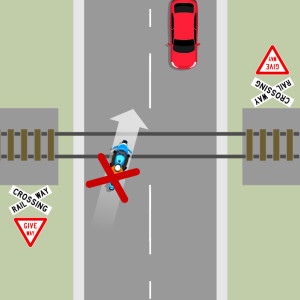
When you ride over road grooves going in the same direction as you're travelling, the motorcycle may tend to wander back and forth. While this may give you an uneasy feeling, it's generally not dangerous. In this situation, the best thing to do is slow down, stay on course, relax and let the motorcycle ride it out.
A high-crowned road is higher in the middle than the sides. The slope isn't difficult to handle if the road is straight or curves to the left. A high-crowned road that curves to the right can give a rider problems because it’s like turning on a curve that's banked the wrong way.
The crown makes the turn more difficult by:
The best way to handle right curves on high-crowned roads is to slow down. This straightens the motorcycle and reduces your chance of skidding.
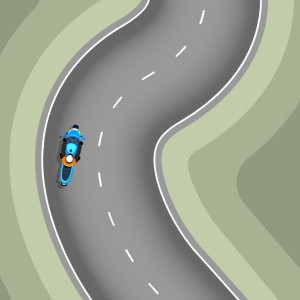
Slow down for right curves on high-crowned roads